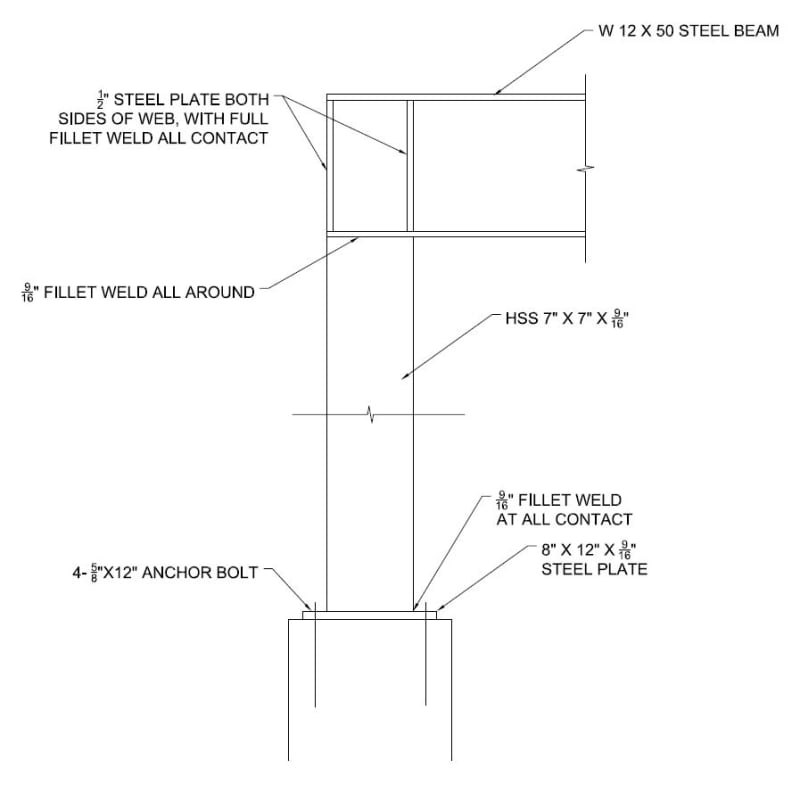AlexWong122
Structural
Hi Guys,
This is a moment frame structure I want to use in combine with wood panel shear wall in a single family house, due to the reason that there is not many interior wall at that location. I have used Sap2000 to model this moment frame, and it appears that it gives very similar deflection as my wood shear walls under the same load (my design load is around 12 kips for this moment frame). In the model I assumed fixed connections and I just want to confirm that my connection detail will work.
Due to the limited space, I am only welding the column to the base plate with 9/16" fillet weld. The nuts and washers are not welded. The column height is 10' and the span is 16'.

Thanks,
Alex
This is a moment frame structure I want to use in combine with wood panel shear wall in a single family house, due to the reason that there is not many interior wall at that location. I have used Sap2000 to model this moment frame, and it appears that it gives very similar deflection as my wood shear walls under the same load (my design load is around 12 kips for this moment frame). In the model I assumed fixed connections and I just want to confirm that my connection detail will work.
Due to the limited space, I am only welding the column to the base plate with 9/16" fillet weld. The nuts and washers are not welded. The column height is 10' and the span is 16'.

Thanks,
Alex
